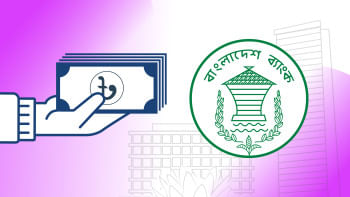The Tide of Nationalism in the Rise of Bangladesh

A. F. Salahuddin Ahmed's
Bengali Nationalism and the Emergence of Bangladesh: An Introductory Outline.
International Centre for Bengal Studies. ISBN: 984 05 8127 02. 1994
Nationalism is one of the most powerful political ideologies of the world and its wave still vibrates through the Indian subcontinent since the colonial powers had this country under its grip for an extended period of time. Professor A. F. Salahuddin Ahmed, an intellectual celebrity, in Bengali Nationalism and the Emergence of Bangladesh: An Introductory Outline has depicted a vivid image of this ideology which at first divided India and then Pakistan. The full magnitude of Ahmed's intellectual work, though, is yet to be fully examined and understood.
Ahmed vastly underpins the Muslim Bengali nationalism. He points out how the harmonious orientation between Hindu and Muslim relations existed before the British took control of the region. However, among Muslims of both the undivided India and the united Pakistan there was virtually no sense of unity. Because of the divide and rule policy of the British rulers, the Muslims were relatively backward than the Hindus because they could not readily accept the Western culture. Extreme Hindu nationalism and the biased behavior of the foreign administrators left Muslims remain right where they were and uneducated even.
However, the author argues that not before the last part of the nineteenth century, this repressed community felt a separate political consciousness due to the advent of some Muslim leaders such as Abdul Latif, Syed Ahmed Khan, Amir Ali and so on. Unfortunately, they were Urdu-speaking and would deliberately avoid standing with Bengali Muslims in the line. The English Empire's decision to divide Bengal generated a psychological tension between the two rival religious players as the Hindu-Muslim communal discord began to take effect sharply at that time.
The establishment of the Muslim League in 1906 was a milestone for the Muslims. It is historically known that Bengali Muslims did not get any space in the political arena of the Sub-continent until the rise of great minds like Sher-e-Bangla Fazlul Huq. Huq, in his political carrier, was a practitioner of secular politics, and yet participated both in Congress and in the Muslim League. In 1929 he established "All-Bengal Peasant and Tenant Farmers Party."
After the end of British rule in 1947, two countries emerged -- India and Pakistan.West Pakistan and East Pakistan were combined into one country, which added a bizarre look to an already politically unstable scenario. The former exploited the latter ruthlessly in terms of social, economic, political, and cultural aspects. The writer claims that there was nothing common between the two entities other than religion and they held no brotherly bond when it came to language, common heritage, shared history, life-style, political values and so on.
Because of its discriminatory acts, the popularity of the Muslim League declined in the eastern part of Pakistan and so, the Awami League immediately was able to capture the mindset of the population of this region. From the 1952 Language Movement onwards, Bengali nationalism began to flourish and people of East Pakistan launched into a struggle to achieve independence. In 1971, finally, the East Pakistan (now Bangladesh) became independent through a bloody war prompted by the unique leadership of Bangabandhu Sheikh Mujibur Rahman, the Father of our nation. But, after Bangabandhu's assassination, the military-turned rulers took an exclusive stance and transformed "Bengali nationalism" into "Bangladeshi nationalism" since the term "Bengali" would also include Indian Bengalis. Considering the Arab nation that spreads over West Asia and North Africa and which contains several countries with different political identities, S. Ahmed criticizes this move.
This thought-stimulating book is such an enjoyable read that any reader can easily comprehend the author's ideas. It also incorporates the actual contexts which introduced various socio-cultural changes in South Asia and at the same time recognizes that nationalism can be good for the repressed and underprivileged population.
In my understanding, the author has brought his nationalist elements from professor Benedict Anderson's most acclaimed book on the origin of nationalism, Imagined Communities. Strictly speaking, Ahmed uses some ambiguous ideas on nationalism; for instance, he believes that religion and language cannot be the basis of nationalism. But in reality it was language that inspired Bengali nationalism. Besides, he also seems to belittle the efforts of the Hindus by monopolizing the phrase "Bengali Muslim nationalism."
Despite these shortcomings, this four-chapter slim book is a treasure trove for us to know our evolutionary identity and the birth of Bangladesh and its political aftermath.
Shuva Das is a third year student of International Relations at Bangabandhu Sheikh Mujibur Rahman Science & Technology University (BSMRSTU).


 For all latest news, follow The Daily Star's Google News channel.
For all latest news, follow The Daily Star's Google News channel. 



Comments